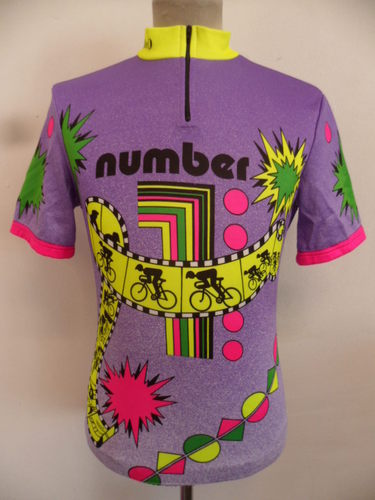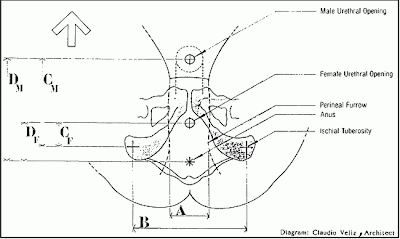20/07/2013
18/07/2013
Engrailed, Invected, Embattled, Indented
Imi Knoebel's Messerschnitte silkscreen print series (1977-93). I'm beginning work on a second collaboration with James Langdon (news on the first — Eastside Projects Manual Draft #6 — to come). Not too much detail at the moment but the context is a performance of sorts; and the work, a costume which part-transforms into an architectural model. At the moment, it feels productive to interleave and loop references, this time in a cycle of five.
Partition line variants with shield fields, from A Complete Guide to Heraldry (1909) by Arthur Charles Fox-Davies, with illustrations by Graham Johnston. The performed building of the 'model' may be considered a stratification. There is a correspondence here, between a geological-sequential and a municipal-hierarchical stack.
Untitled, undated (c. 1970) Běla Kolářová make-up drawing, as seen at Raven Row earlier this year. A gestural inventory, with some dialectic between angst and whimsy brought about by the use of make-up as medium.
The palette will (I think) pull on royal blue and yellows that argue between themselves – from hazard fluos to just something just shy of ochre. Black as line and punctuation point. This arrives out of melting in the pot Leipzig's civic colours (more explanation another time), a Scandinavian retailer, the notion of an 'away kit', hi-viz bib 'n' brace, yellow jersey,...
Nomograph for the prediction of a four-hour sweat loss, from cabin thermal environment studies by NASA. Performance, within constrained spatial, gravitational conditions and durations. Interested by the intimacy of this data, for something of a slow spectacle.
Imi Knoebel, again.
Monochromatic print process solution for heraldic tinctures – "the system of hatching used by Marcus Vulson de la Colombière, 1639", again from A Complete Guide to Heraldry.
The plastercasty redoubling of surface expression that comes with a one-colour anything product.
"Anatomical dimensions for the design of body waste management facilities", again from NASA.
09/07/2013
Susan, Sonia

Susan Bosence. "STRIPE and SPOT. (a) Combination of double wax resist twice brush dyed in Soledon blue and brown. Wax removed and paste resisted then brush dyed in dark blue on calico. (b) Wax resist spots, brush dyed in brown, paste resisted and brush dyed in blue. N.B. very labour intensive processes. 1960s."

Sonia Delaunay. "Project de tapis. Encre de Chine. 35 x 22,5cm."

S.B. "UNNAMED. Half grains of rice tied and dyed in indigo on silk. N.B. Susan sat sewing this length under a tree near Quir Bajou, her small house in France, one Summer. 1970s."

S.D. "Les Flèches. Encre de Chine. 1923. 27 x 21cm".

S.B. "STRIPE. Double paste resist, twice brush dyed in Soledon green and blue. 1960s."

S.B. "SPOT. Twice wax resisted spot, twice dyed in indigo and Caledon brown on fine cotton . (Alan Powers). 1980s."

S.D. "Projet pour une des premières publicité au Néon".

S.B. "UNNAMED. (a) Pin block wax resist dyed in Caledon red on poplin. (WSCAD 1983)."
Here, Susan Bosence and Sonia Delaunay, spliced. One offsetting the other, because this best represents how it is that a working clue can be taken on board — to do with the way treatment, animate hand, careful-careless touch can carry elementary (quite obvious) compositional forms — underneath simply regarding the influence of both.
The Sonia Delaunay drawings are taken from a curious 1978 book subtited 'Dessins: noirs et blancs' and pubished by Jacques Damase and 'Artcurial' of Paris.
The Susan Bosence samples were photographed during a visit to the Crafts Study Centre in Farnham, with a group of eleven friends squeezed in. I emailed (the generous and welcoming) curator Jean Vacher ahead of the day, to ask for a viewing of elements of the collection, such as Barron & Larchers' sample books and Lucie Rie pots.
It was wonderful of course, to feel the hand-weight of Rie's (and Hans Coper's) vessels, as well as to leaf through the aptly named 'elephant' volumes of B & L's samples.
But the revelation was Susan Bosence's sample catalogue. Difficult here to represent the bleeds against the pin-sharp edges but the technical descriptions give some idea of the painstaking skill required to arrive at such acuteness, nuance. I had been reading 'Hand Block Printing and Resist Dyeing' (1985) but not had the sense outside of the mentorship of Phyliss Barron, of what she was achieving discreetly.
A footnote. We also saw the exhibition downstairs of Robin Tanner's collection. He has been discussed, with relation to Marion Richardson, in a previous post. A small quote in the space: "As a boy I had two great longings — to be a teacher and an artist — and I have never wavered".
Subscribe to:
Comments (Atom)
















